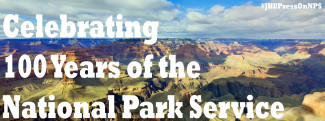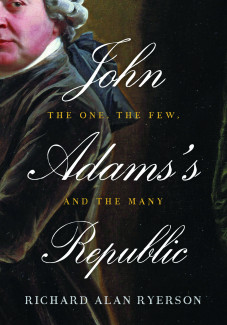
Johns Hopkins UniversityEst. 1876
America’s First Research University
Fifty Years of Fond Memories

The National Park Service (NPS) celebrates its centennial anniversary in the month of August! NPS has served as a valuable resource for many of our authors, both professionally and recreationally. To commemorate the occasion, our authors have taken to the blog to pay homage to “America’s best idea”! Check back with us throughout the month of August for more #JHUPressOnNPS! (Series photo credit: Wikimedia)

My affection for America’s National Parks began nearly half a century ago. Growing up in New England, which had few national parks, I could only read about the magnificent parks in the West. But while still in my teens I was fortunate to visit one, Yosemite, and resolved that I would see more when I had the time, and my own wheels. In 1967, just before entering graduate school at Johns Hopkins, I decided to take a summer tour of as many parks as I could see. This was a solo venture, tenting in park camp grounds and occasionally backpacking into the interior. In two months I saw Yellowstone, the Tetons, Glacier, Crater Lake, and (my favorite) Olympic Park in the northwest, and Zion and the Grand Canyon in the southwest, as well as brief stops at smaller sites: Mt. Rushmore, Devil’s Tower, and Mesa Verde. I returned to New England by way of the Great Smokey Mountains.
The second chapter in my appreciation of the heritage of our National Parks began when I became editor of the Adams Papers at the Massachusetts Historical Society. Although I had occasionally visited a few national historic sites, I had never gotten to know one well until 1983, when I was asked to speak at the Adams National Historic Park in Quincy, Massachusetts. This park includes the summer and retirement residence of John Adams (from 1788 to 1826), and summer residence, in the same structure, of John Quincy Adams (from 1826 to 1848); a magnificent family library in an adjacent nineteenth century building; and, about a mile away, two adjacent farmhouses, the eighteenth-century birthplaces of John and John Quincy. The Adams site is one of the more modest of presidential homes, both smaller and less ornate than Mt. Vernon, Monticello, or Hyde Park, but it is one of the richest in conveying the sense of late eighteenth and early nineteenth-century life, as lived by a family that was both exceptional and characteristic of American culture of the period.
My affection for this splendid site, however, rests on more than its fine collection of family furniture, portraits, and books in every room, for which, as a historian who has devoted over thirty years to the study of John and Abigail Adams, I naturally have a deep affection. A National Park, whether the gloriously scenic Olympic or the uniquely historic Adams site, is nothing without its people, the many thousands who visit it each year, and the dozens or even hundreds who manage and preserve it, and who present it to the American public. Over three decades of my acquaintance with the Adams National Historic Park, I have had the honor of knowing several dedicated superintendents and staff members whose love of their Park and its family has made it the national treasure that it is. In my visit to Olympic Park, back in 1967, the staff were less visible, but still there, making sure that every day I saw the wonders of nature. To the staffs of both Parks, and many others, I am deeply grateful.
Richard Alan Ryerson, the former academic director and historian of the David Library of the American Revolution, was the editor-in-chief of the Adams Papers from 1983 to 2001. His book, John Adams’s Republic: The One, the Few, and the Many will be available in September 2016. 


